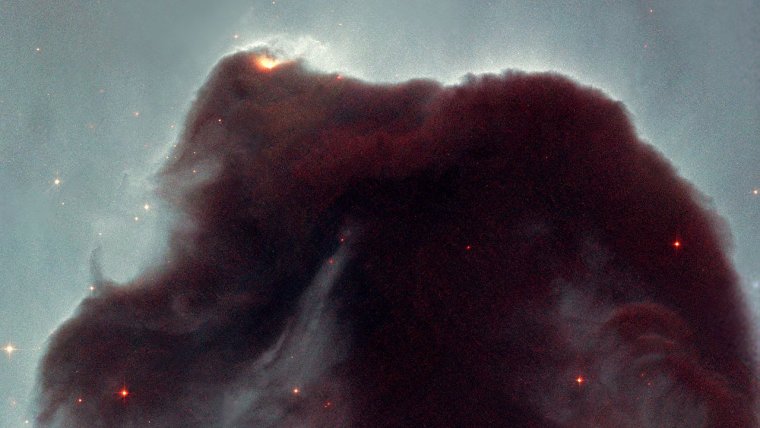| News / Space News |
All we are is dust in the interstellar wind
NSF | MARCH 20, 2016
Some researchers are delving deep down to see how dust comes together at the atomic level, while others are looking at the big picture to see where stars and planets might be forming in dusty stellar nurseries.

Cosmic dust of the Horsehead Nebula. ![]()
Although dust only makes up about 1 percent of the interstellar medium (the stuff between the stars), it can have big effects on astronomical observations. Dust has a bad reputation because it gets in the way by absorbing and scattering the visible light from objects such as far-off galaxies and stars, making them difficult or impossible to observe with optical telescopes.
The scattering effect dust has is known as "reddening" -- dust scatters the blue light coming from an object, making it appear redder. This occurs because dust has a greater effect on light with short wavelengths, such as blue. A similar effect is what causes sunsets to appear red.
Astronomers can tell a lot about a star simply by its color, so this reddening effect can trick us into thinking a star is cooler and dimmer than it actually is.
Using data from almost one billion stars, the researchers created a 3-D map of interstellar dust reddening across three quarters of the visible sky. This map allows astronomers to know when the targets of their observations may be suffering a reddening effect, and how much reddening they can expect.
Dust distribution reveals our galaxy's structure and we can see that most of the dust is contained in the disk, which is the plane in which the spiral arms of our galaxy lie. It also provides a snapshot of our galaxy’s history, showing that the Milky Way has had its fair share of galactic fender benders with other galaxies. In fact, we are due to collide and merge with our neighbor, the Andromeda galaxy, in about 4 billion years.
Like dents in a bumper, we can see the damage by looking for ghostly trails of dust extending outward from the disk, showing that another galaxy might have passed through, dragging dust from our galaxy along for the ride.
YOU MAY ALSO LIKE

